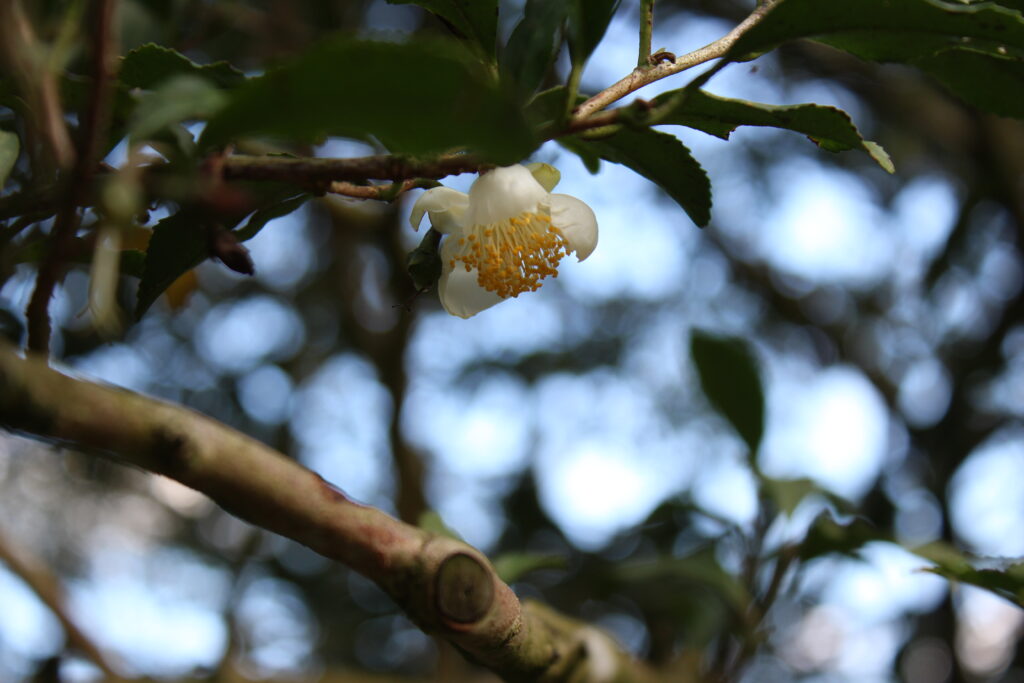The colder season has started here in Nagasaki. Most of the nights are below 10ºC although we have not reached freezing temperatures just yet. The supermarkets are filled with ingredients for nabe (hot pot) dishes, and blankets and warm sweaters are brought down from the attic.
秋冬番茶 shuutoubancha : autumn & winter harvest was finished by early November. The tea plants are in dormancy, preserving their energy for spring.
Tea farmers have been trimming their plants, leaving the tea fields to look all trim’ and proper. They’ve also been fertilising their tea fields, to give the fertiliser time to slowly seep into the soil and nourish the tea tree roots.
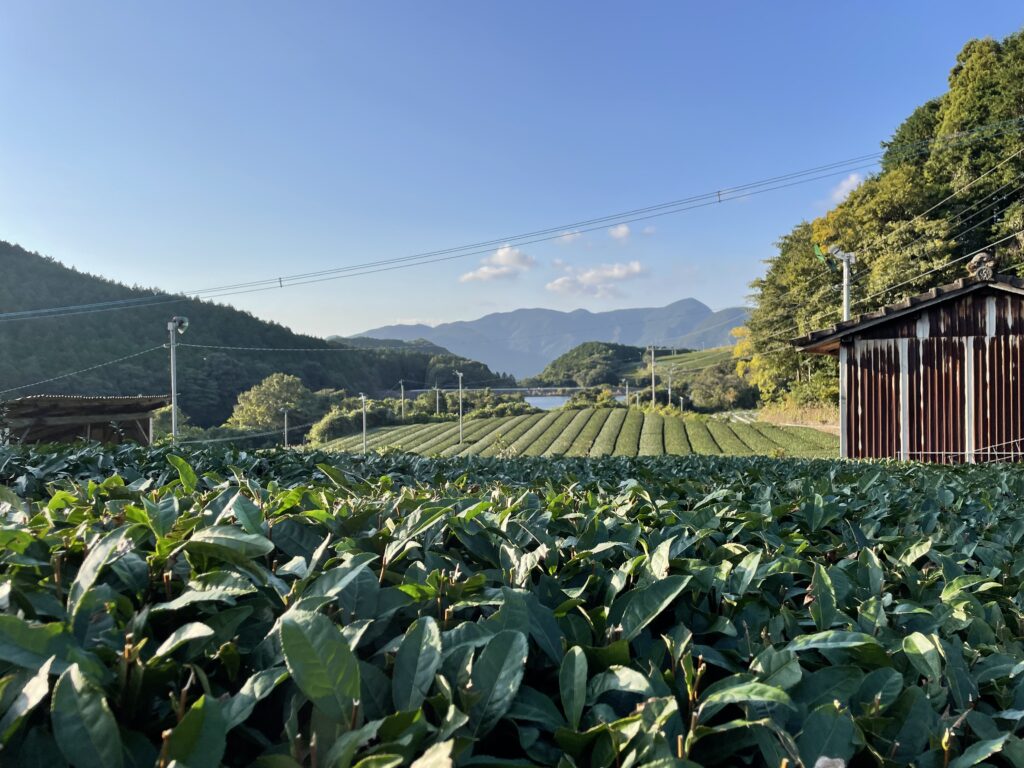
Tea flowers & tea seeds
There is still an abundance of tea flowers: you’ll often see them in clusters at the end of the row of tea trees. Due to less trimming on the side of the rows, the flowers have more opportunity to grow.
The tea seeds are now mainly all ripe and fallen to the ground. We can’t resist to fill our pockets when we’re out in the fields and we spot some. We’ll have enough to show our tea tour visitors when they visit outside of tea seed season.
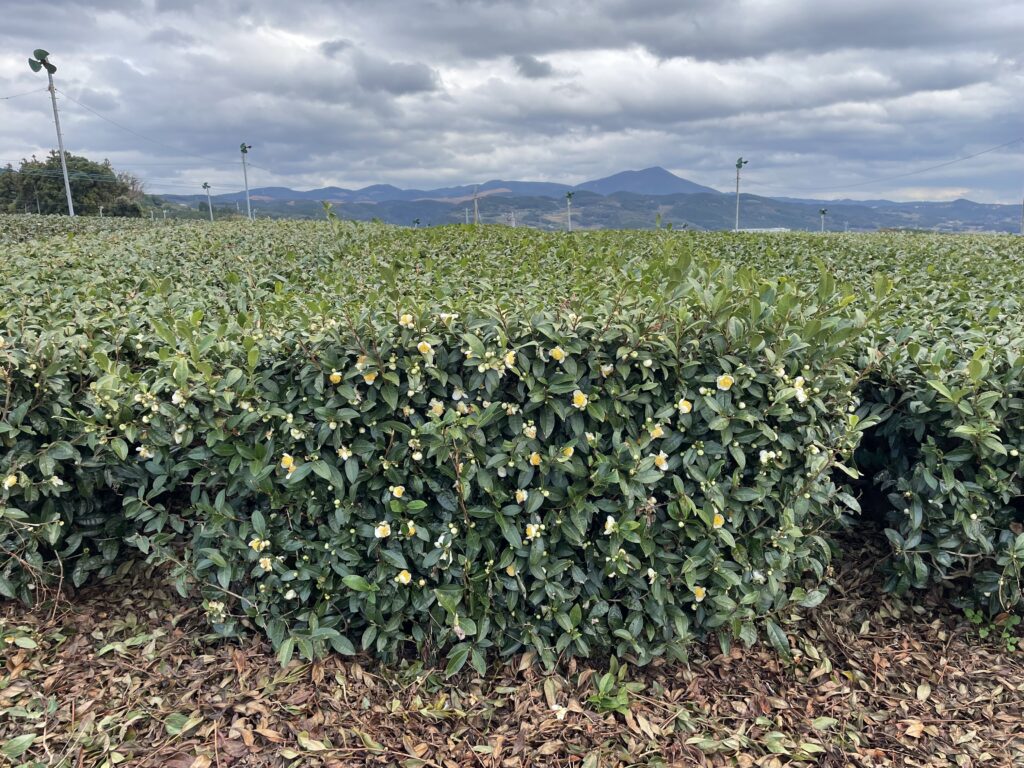
Fertilising
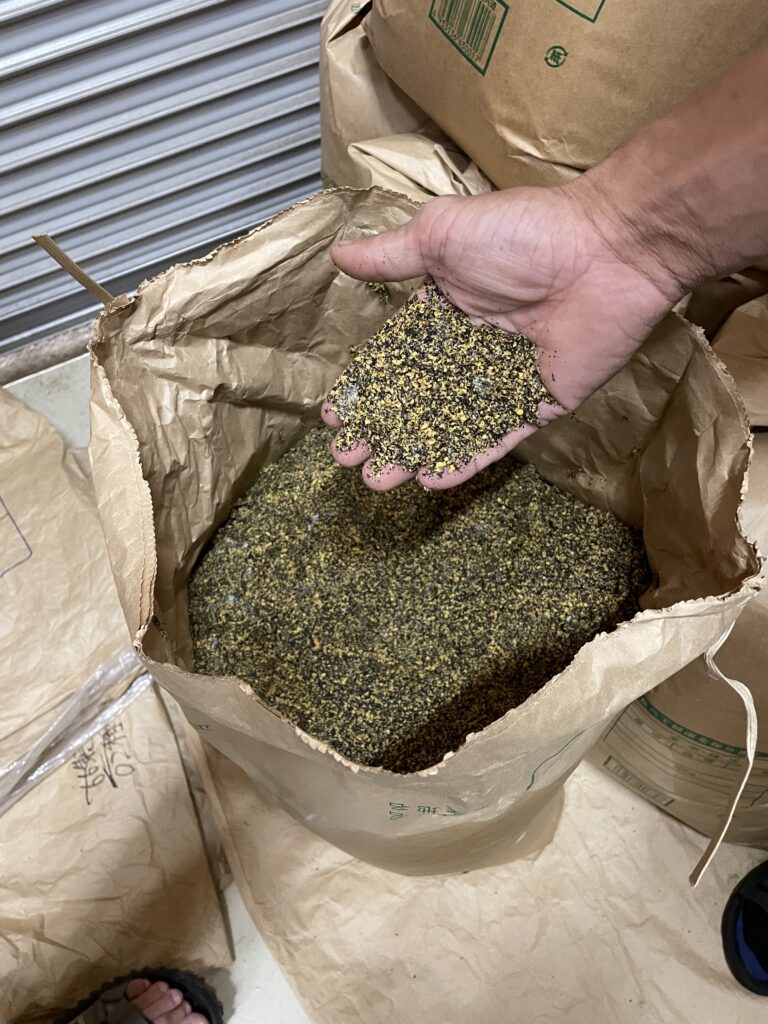
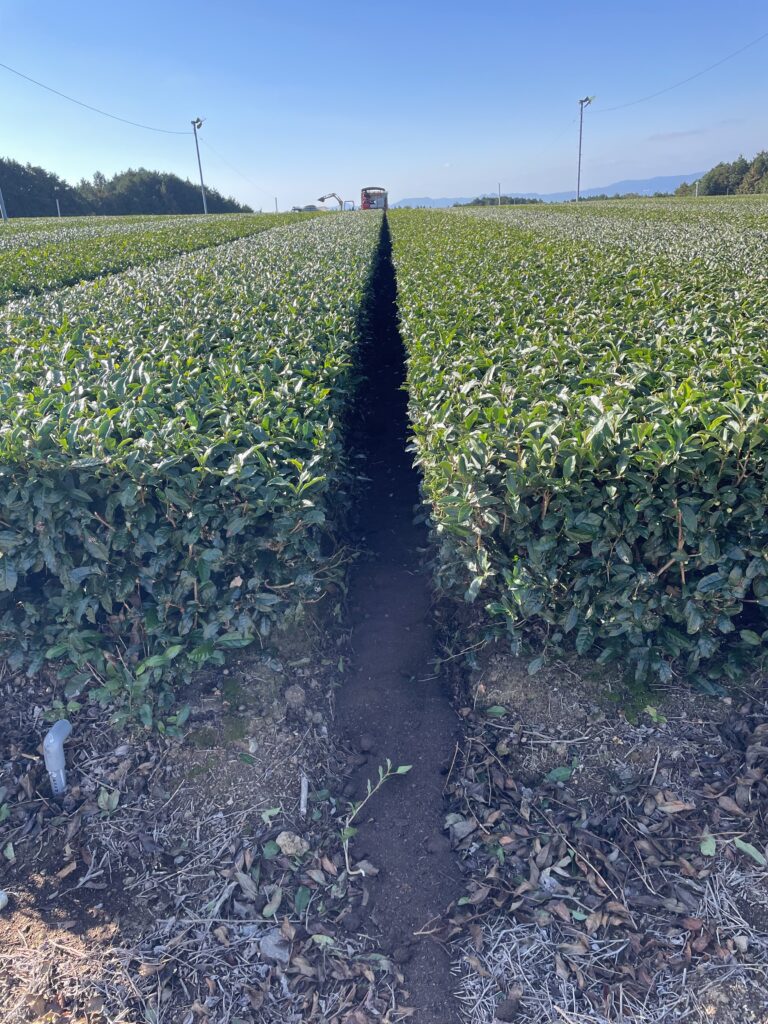
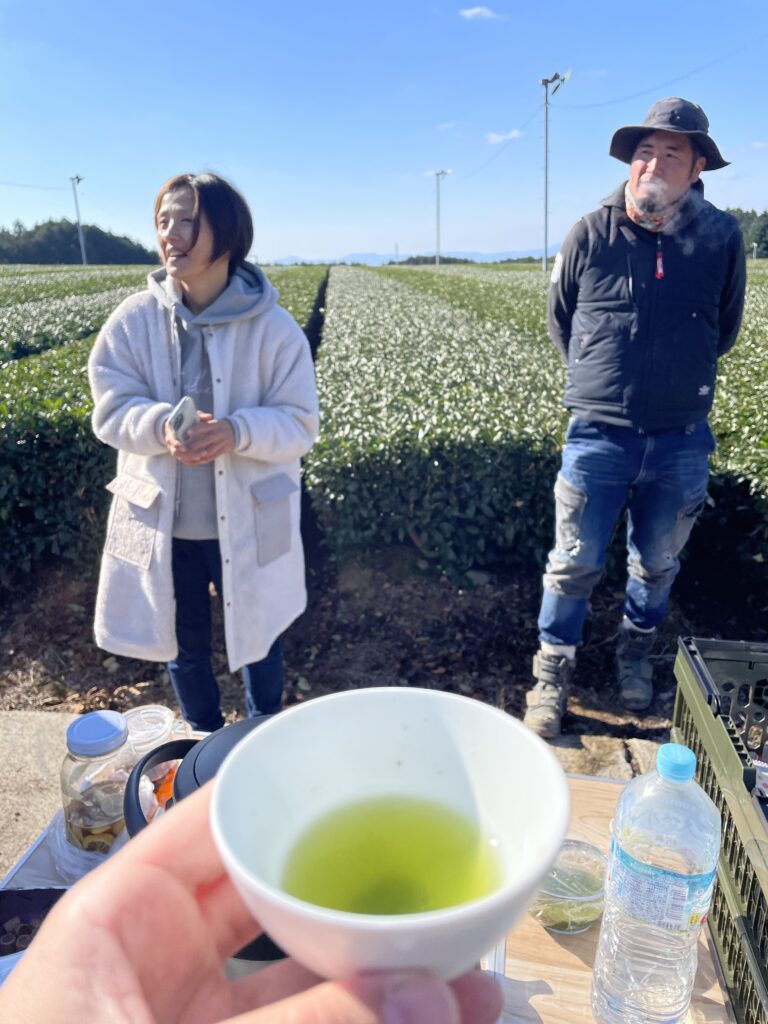
To replenish the soil after harvesting, tea farmers usually use different types of fertiliser. While some may leave just the leaves and branches of the autumn/winter trimming to slowly decompose in the soil, most farmers will add extra nutrients to enrich the soil. On the photo left for instance are the left-overs of organic canola oil production. In the middle photo, tea farmer Onoue (shown on the photo on the right with his wife) was adding a self-made fertiliser made including sheep and cow manure.
Tea farmer Onoue and his wife showed us tremendous hospitality, receiving us on a cold but sunny day in his tea fields: setting up a picnic table and preparing a tea tasting of three different teas!
Last harvest
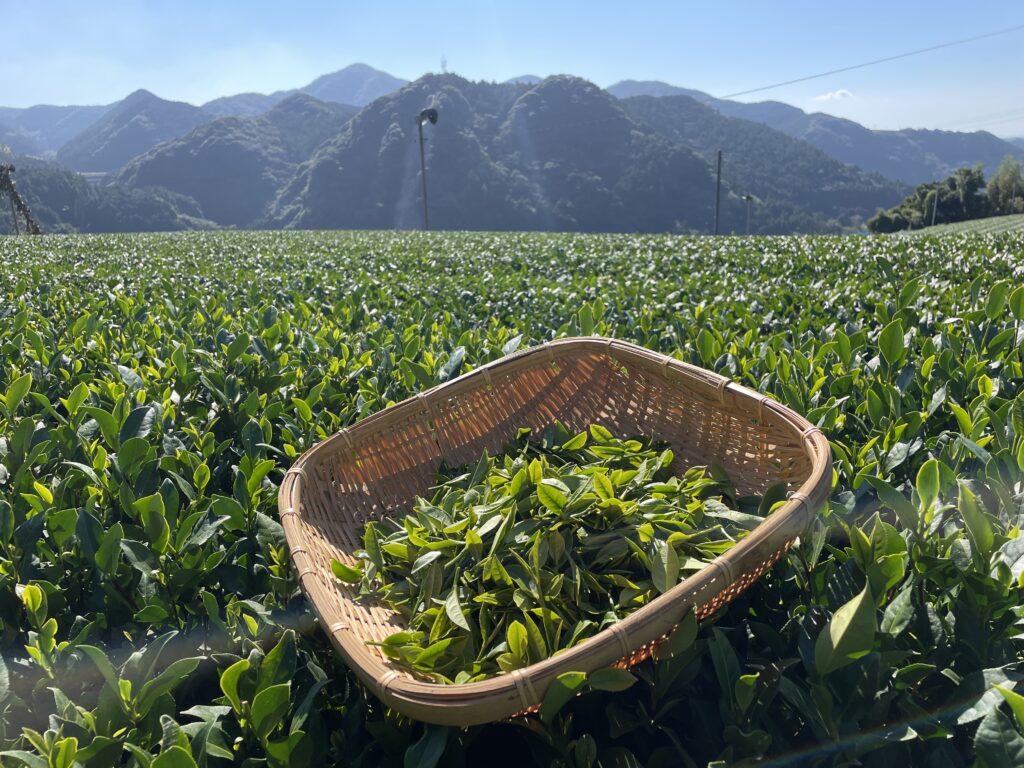
On the 3rd of November, we joined tea farmer Tozaka for a spontaneous very last (hand-picked) tea harvest of the year.
Tozaka wanted to create one last small batch of hand-rolled black tea for a special event in Tokyo that he attended (Tea for Peace) a week later.
The leaves we picked were from a Taiwanese Qingxin wulong cultivar that Tozaka uses to experiment with.
Tea region educational tea courses
We have been supporting the new Sonogi Cha Ambassador programme and are excited to see its slow but steady growth. This weekend Matsu and the core Sonogi Cha Ambassador team are in Tokyo to host the first programme there. Earlier this month saw the first two courses being held in Nagasaki city. It is inspiring to see the local interest and enthusiasm for these educational tea courses.
Together with Haruna Nishida, who hosts the Sonogi Cha Ambassador course, we went to the YameCha Sommelier School earlier this month to experience their Yame Cha Sommelier tea programme. We look forward to seeing these tea region-specific tea courses being developed all over Japanese tea regions.
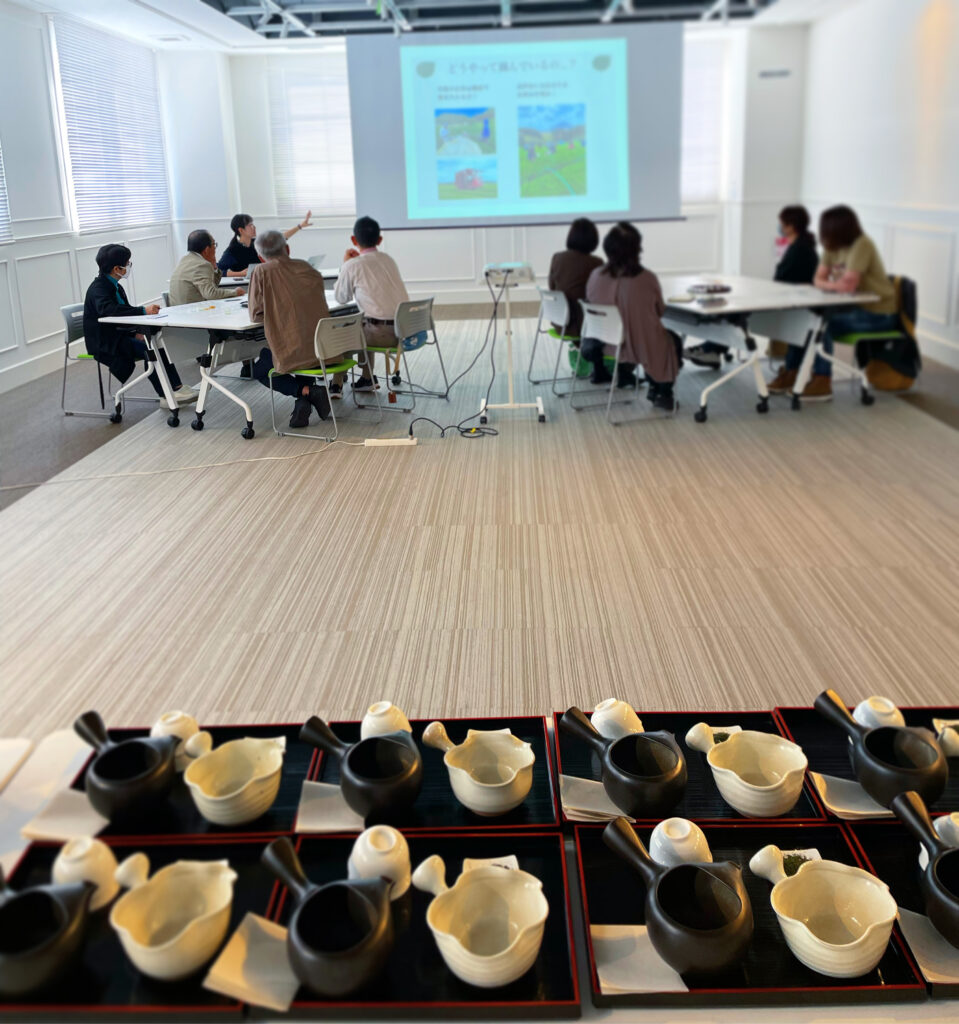
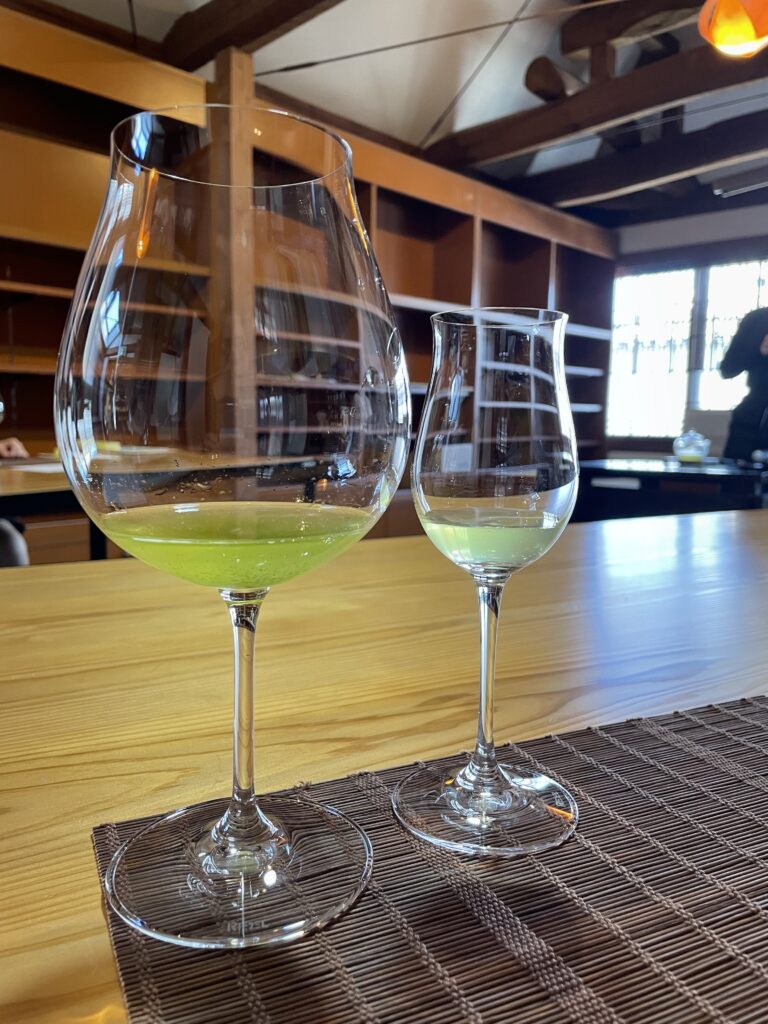

Hand-rolled sencha
In November the Japanese sencha hand-rolling competition is held in Shizuoka. Whilst the Sonogi region does not produce any sencha for commercial use, we still have a young team that is eager to learn and retain the skills of tea hand-rolling so they had a number of practice rounds on the heated 焙炉 hoiro table (washi paper top with a gas heater below) before heading to the competition.
They used tea leaves from spring harvest that had been frozen after steaming.
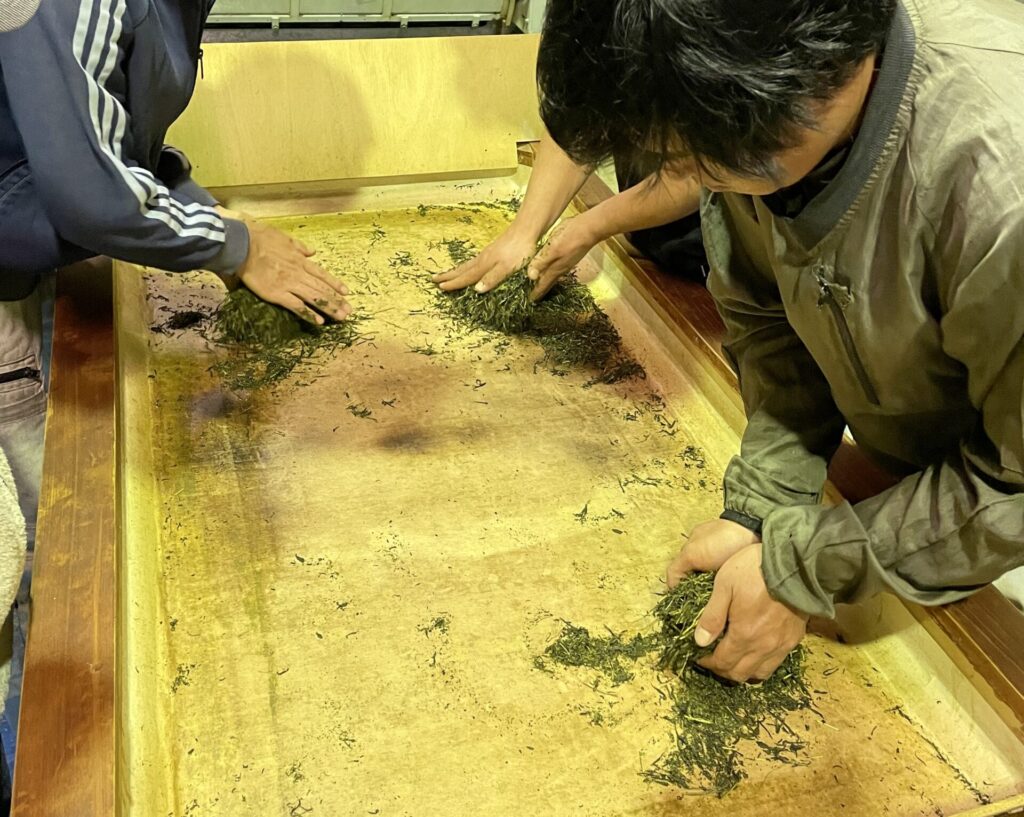
Other news
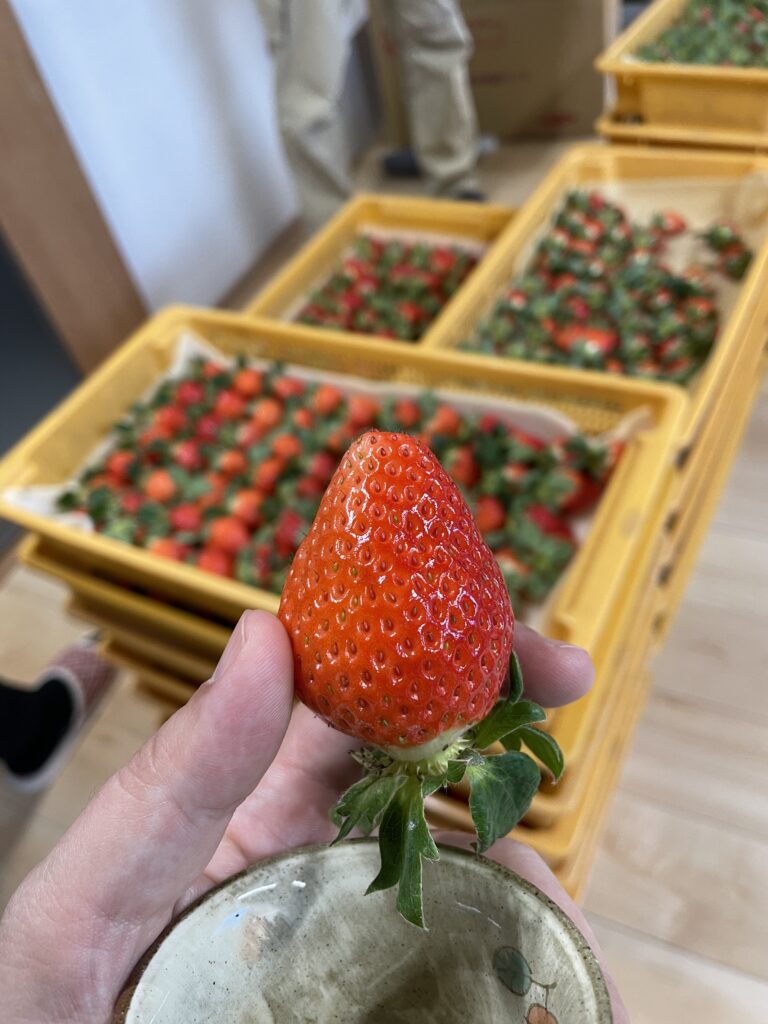
Perhaps contrary to what you’d think: strawberry season has started here this month. The strawberries are grown in greenhouses and are farmed during the winter period. What an unexpected delight to taste a full-flavoured juicy strawberry whilst being wrapped in a blanket near the heater!
Apart from strawberries, there is also an abundance of mikan (oranges), kinkan (kumquats), kaki (persimmon) and yuzu.
